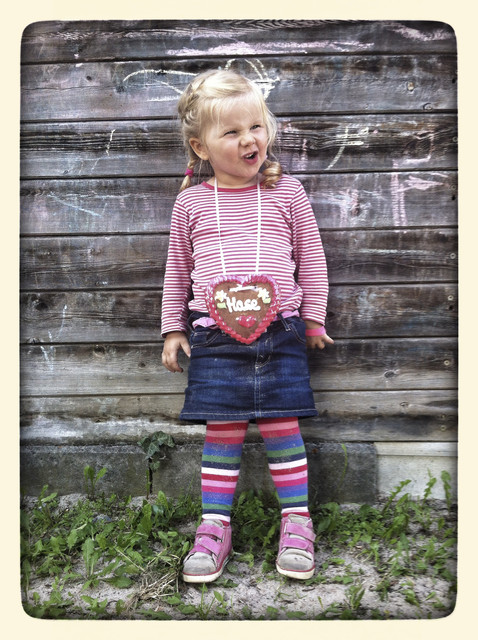Interview Series: Gerald Staufer, CEO of Westend61 Published on by luis in Best-Of Articles, Interviews
Stock Performer is proud to partner with Westend61 to support them in the analysis and accounting of their sales at multiple stock agencies. Amongst other things we developed for them is an image recognition tool which sums sales of one of their image at many agencies. A feature we will soon release to all Stock Performer customers.
 Gerald Staufer, CEO of Westend61
Gerald Staufer, CEO of Westend61
During our partnership with Westend61 we learned a lot about how they work and thought it interesting to share with you. For that purpose we are happy to interview Gerald Staufer, CEO and co-founder of Westend61.
When did you found Westend61 and what was the vision you wanted to realize?
We founded Westend61 in 2003. We wanted to bring great RF imagery to the market. Believe it or not, 11 years ago it was difficult to convince German professional photographers to contribute to traditional Royalty Free (RF). That’s why we also included Rights Managed (RM) in our initial offering. And ever since we market both models. Our goal is to offer excellent quality. That is why we keep our collection trimmed at only 200,000 assets.
**Westend61 sells stock media directly over the Westend61 website. But a lot of your business is done by distributing images to other agencies. Can you explain this business model to us?
**
Our business model can be explained as follows: imagine Getty, Corbis and similar agencies as supermarkets, where customers hang around. We are a provider. Our images fill the shelves, very well placed in fact. Our photographers have the simple advantage that they give us their images and in a short time we market them worldwide to all the leading agencies as well as the leading agencies in many countries. Suitable images are placed on niche agencies with a solid customer base.
 Image from Westend61’s Lifestyle collection
Image from Westend61’s Lifestyle collection
To how many agencies do you deliver?
We supply about 120 agencies.
How do you decide whether an agency is an interesting distribution partner for you?
We try to find out if the potential partner has a good customer base and a convincing concept. It usually works out well, sometimes it doesn’t.
From a photographer’s point of view: how does this distribution process work? I just photograph and you do the rest, right?
That’s more or less it! The photographer shoots the pictures, processes them and gives them a title. We take over the rest, including the unloved keywording and the distribution.
“In 11 years we have not downgraded anybody’s rate.”
What cut do you take for distributing my stock images?
When photographers start with us they get 40% of our revenue on an image. Once their images have produced 10,000 EUR, we move them on to a 50% rate at which they stay for ever. In 11 years we have not downgraded anybody’s rate.
What type of images are successful? What trends are you seeing today in your customer base?
At the end of the day, its the same old formula: strong conceptual images. The viewer must understand the image’s message within a tenth of a second. That applies to all image categories: lifestyle, food, landscape, etc… Of course, lifestyle images are strongest revenue-wise, that’s no secret. But they are also the most expensive to produce. I always find the question about trends quite amusing. Everybody asks what the trends are. But in fact, everybody knows them!
“Everybody asks what the trends are. But in fact, everybody knows them!”
Smartphone photography has changed our visual habits. That explains why filtered images are searched for so often today. I tell our photographers today that everything is allowed. We are experiencing great times! About 2 or 3 years ago, the standard was not to process images too much, keeping them clean. Everybody assumed buyers would post-process the images themselves. Until everybody realized, that customers buy exactly what they see.
 Image from Westend61’s Lifestyle collection
Image from Westend61’s Lifestyle collection
Authentic images are on high demand. That’s certainly nothing new for your readers. That said, these type of images belong to the premium league. Producing pictures with models on location which look authentic is a real challenge. If you combine that with good concepts then you have very high potential images. We are seeing a lot of images of photographer’s friends or children produced in an intimate and authentic atmosphere. But even here, concepts have to be strong.
It might seem fun to portrait someone standing straight in front of something and then add some analogue filter. That’s going to be a short trend. I see so many such hipster portraits on Instagram. But that’s not a concept lots of buyers are looking for. You need to add more to be successful.
When I look at our microstock sales, it sometimes feels as if we are still living in the first decade of the 21st century. We are seeing a lot of sales on images isolated on white. Classic, simple images. This just confirms the different needs of buyers. Art directors at magazines are different than the people buying for their websites or community websites. Even online magazines have a large need for isolated on white images to include into their many articles. Isolated images will always be trendy.
If I were a photographer myself, I would provide agency like Westend61 my trendier and more authentic images. Such images don’t sell in high volumes, so you want to aim for a higher revenue per sale. As a photographer, think carefully what you do with your images and above all what customers you want to target. This last point is often ignored by photographers and then they wonder why they get bad sales.
“This last point is often ignored by photographers and then they wonder why they get bad sales.”
Do you see a difference in customer purchases on the different distribution agencies? Do some images sell better on one agency than they do on another? Why do you think that is?
Of course I see them. I recently shared with our photographer community the Top 10 images from various of our distribution partners. It was clear that each has a different customer base. Getty and Corbis top 10 for example are completely different. And that is a good thing. It wouldn’t be good if two or three agencies dominated the complete market. Customer have their preferences. Just like in real life.
 Image from Westend61’s Lifestyle collection
Image from Westend61’s Lifestyle collection
You have recently started distributing to microstock agencies. Explain to us how you decided to take this step. And why didn’t you take this step earlier?
Fortunately we never had a need to get into microstock. In spite of a decreasing market, we have been able to maintain good business. But we thought: eventually we will have to engage the market which has been eaten up some of our revenue. Nevertheless, we thought photographers could get into microstock themselves. Financing microstock productions from our pockets didn’t seem to make sense. Until last year one of our photographers approached me. He produced a lot of simple symbol based images, a lot of food images and had suffered from the market evolution of the recent years. He wanted us to consider selling a portion of his images on microstock markets. I told him he could do that himself. But he disagreed, he was not willing to go through the hassle of keywording his images for microstock, going through the hamster wheel and keeping a constant eye on the market rules. He told me you do it for me, because he will simply never do it.
That surprised me and it gave us the idea to create and guide a joint group of photographers which together would sell under one account gaining more weight within the microstock market. We asked our photographers if they would be interested and most of them answered: if you think that makes sense, than just do it, they were not willing to go through the hassle of microstock.
“It gave us the idea to create and guide a joint group of photographers which together would sell under one account gaining more weight within the microstock market.”
That’s how the idea of an optimal distribution agency came about. Photographers give us their images and we decide what the best marketing channel is. We offer this to our photographers and those who are interest can participate in the program. For those who are not interested we continue to market their images via the traditional agencies.
We are happy that we are now accepting many more images. Isolated and symbol images are now important to us again. For the past three years, before the introduction of our microstock program, we had been rejecting these type of images, because our most important partners did not want them.
 Image from Westend61’s Moments collection.
Image from Westend61’s Moments collection.
However, this project does require a lot of work. We have recruited a project manager, we are keywording all images and upload them to all microstock agencies. This is a complex and costly process. An aspect which we had sofar seen as an obstacle and had prevented us from engaging this market.
Are you seeing different types of sales on your microstock partners than on your traditional macrostock partners?
Yes. Although we have amazing lifestyle images on our microstock channels, handshakes and symbol images are high revenue earners! I would never offer an expensive production to a microstock agency, or only when it has recovered its costs on traditional agencies. Not because I am against selling images for cheap, but because the thousands of microstock customers are looking for other type of images. That is my conclusion from our first 6 months in microstock.
“I would never offer an expensive production to a microstock agency, or only when it has recovered its costs on traditional agencies.”
With the increase in competition in the microstock market and the decreasing earnings, many talented photographers are looking for more high-end agencies on which to sell their content. Many are applying to Westend61. How do you choose your photographers and why do you think Westend61 is so popular among photographers today?
That is true. We do have lots of applications right now. I believe this is due to our philosophy. At the center of all our decisions is always our most important partner: our photographers. Without them we wouldn’t be here. Our goal is to offer our photographers a complete service. For our lifestyle photographers we have two art directors. We have an academy where we share our market research and customer demands. And we have an amazing team ready to help with ideas, legal issues and with post production. And then we have our community which we try to impress and encourage to work for us and I believe we are able to achieve that.
We know from feedback that photographers appreciate being treated with respect and they talk about us to their friends. Its fun to work with us and our team is passionate about photographer needs and issues day in day out.
 Image from Westend61’s YOU collection.
Image from Westend61’s YOU collection.
When selecting our photographers we have become very demanding. Photographers who have thousands of images on microstock, sell poorly and believe they could save their business with a few of our high revenue sales, are not interesting for us. We want photographers who are good and produce strong concepts. We want photographers who enjoy their job and with whom we can continue building one of the strongest conceptual agencies in the world.
You have recently launched a very dynamic and authentic mobile stock collection called SMART Collection. Many photographers think mobile photography is just a marketing gimmick. Are customers asking for images specifically produced with mobiles? Should photographers take this trend seriously?
A smart phone is a tool, an opportunity for photographers to produce content in a special and unique way. But the same rules apply here: customers buy concepts not some filtered image which looks nice on a smart phone display. Some people simply photograph any junk food that lands on their lunch table and believe it is art or cool. It’s not. No one wants to eat junk food nor see it. Perhaps only in the context of unhealthy food, but that market is covered. Just because your smartphone chip is subpar doesn’t mean you have to photograph subpar images.
 Image from Westend61’s smartphone SMART collection
Image from Westend61’s smartphone SMART collection
Instagram-style images do cater for specific markets. For certain magazines they can be interesting since today’s cameras can make pictures easily covering an A4 page. Online magazines can also find them interesting. Book and CD cover designers also like the more artistic style of mobile images. For the more savvy web designers the images can be useful too. But whether the images were shot on a smart phone or on a DSLR retouched with a smartphone app is irrelevant. The issue is that one always has a camera in the pocket causing the masses of images to increase faster. You should be aware of that.
Should you take this trend seriously as a photographer? Not necessarily. If you are not interested in smart phone photography you are not going to suffer, as long as you produce enough output from your conventional camera. If you enjoy it, you can benefit from having a camera always with you and lots of new pictures, pictures which you took without having the strict „stock“ criteria in mind. Online magazines however, will continue to buy huge amounts of isolated images on white shot with a conventional camera, since their need for filtered images remains small.
“No worries dear photographers, you don’t have to buy an iPhone to remain profitable in the market!”
So to sum it all: no worries dear photographers, you don’t have to buy an iPhone to remain profitable in the market!
You have been around for a long time, what has changed in the market since you started and how have you adapted?
When we started, it was a market of a few professionals. We were still scanning diafilms, processed the images ourselves and with 500 images per month we were well in business. As an agency! Today there are many times more market participants. You need ever more images just to sustain revenue. After 9 years we celebrated our 100,000th image. After 11 years, we hit the 200,000 mark. With our old tempo, we would have disappeared by now. Any photographer who wants to survive today has to produce more images than say in 2008. Ten to twelve years ago you could earn a handsome amount with 300 to 500 lifestyle images produced on the side. Today you must invest many hours to live from stock photography. It has become a full time job.
That said, today everything is allowed. Filtered images, smart phone picture, and more. I really like that, its a lot of fun and easier than ever to produce large amounts. You have to keep that in mind. For us it was difficult emotionally to see how the microstock agencies were eating into our revenue. But that’s simply how it is in a free market. It evolves. In fact it is important that it does so. In 2006 about 10 to 20 million licenses were sold worldwide, today it is around 300 million, albeit at cheaper prices. But at the end of the day, we collect good sums of revenue and it is fun to be part of this new market landscape. We will continue to be successful today as well.
Where do you think the market is going to?
If I knew that I would immediately buy on credit a beautiful villa on a Munich lakeside! I don’t know. More and more images fight for less and less slots. We want to keep being at the top of the game with our quality. And I am certain that in 10 years images will continue to be as necessary as today.
“Quality is going to win”
Quality is going to win and amateurs will have a harder and harder time. It will become again a market of professionals or of amateurs investing large amounts of time and effort to keep up. The golden age where you could make good money with average images is over. It is over today and in 10 years it will be even less likely.
Where do you want Westend61 to be in 10 years from now?
We are doing well and will continue to be a magnet for the best photographers
Hopefully also in a continued partnership with Stock Performer! We love the tool and it really helps us understand our sales. Plus we really enjoy working with you! Thank you for your interview!
You enjoyed this interview? Then read more here: Interview Series
Sign up to Stock Performer and see how we can help you make more money. The first month is completely free!